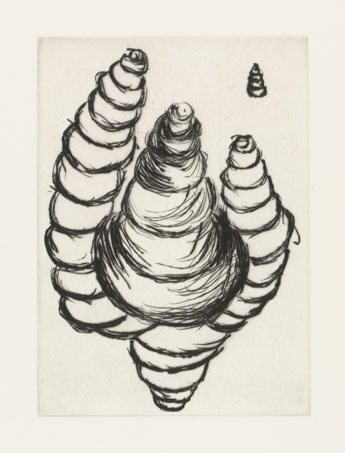Drypoint
Bourgeois employed drypoint more frequently than any other technique by far, creating some 1,500 prints that make sole use of it, or adding it to combinations of other intaglio techniques. She liked the fact that the drypoint needle was easy to manipulate and that no acid or special equipment was required. She referred to the scratching as an “endearing” gesture, a kind of “stroking.” While it could not “convert antagonism,” something she admired in engraving, she liked the immediacy of drypoint’s effects, with its soft, irregular line and tentative qualities.
Bourgeois made drypoints in the 1940s, working at home, and took up the technique again when she returned to printmaking in the late 1980s, most often working with printer Felix Harlan of Harlan & Weaver. She chose it for some her most iconic print projects, such as the Sainte Sébastienne series, which led to a monumental print nearly 40 inches high, the portfolio Anatomy, with its catalog of body parts, and the illustrated book Ode à Ma Mère, which presents a range of her celebrated spider imagery.
